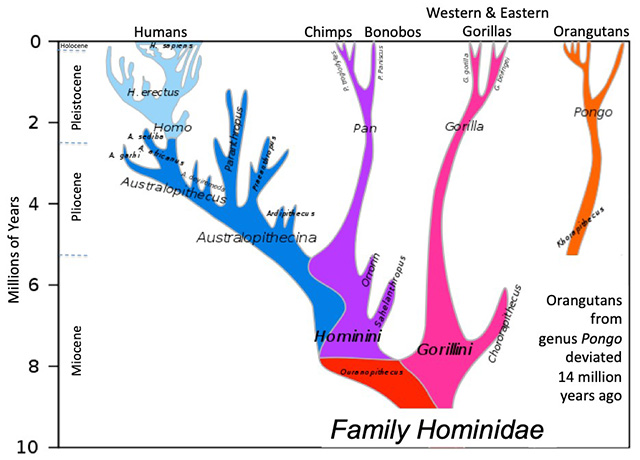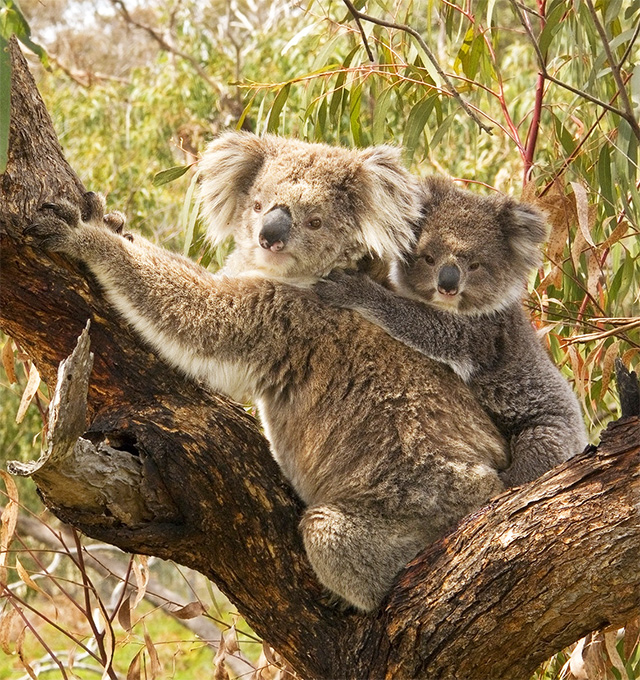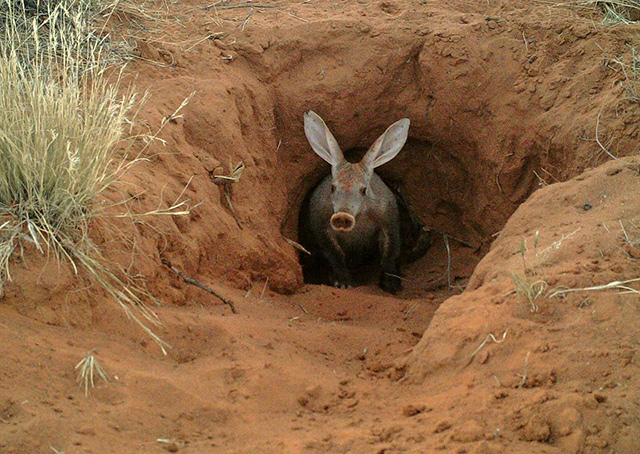
There are hundreds of thousands of species of beetle, but only one species of human, and koala, and aardvark.
Homo sapiens evolved around 300,000 years ago, when there were at least three other species of the genus Homo on Earth. By 40,000 years ago, we were the only one left.
But at least we have great ape cousins in the hominid family. There are other species on Earth that are even lonelier, the last branches of their family trees.
Koalas live only in Eastern Australia—the only species and the only genus in their families. Their closest living relatives are another unusual Australian, the wombat, which they diverged from 35 million years ago.
It’s thought that koalas’ highly specialized diet is the reason they branched off. They’re adapted to eat eucalyptus leaves—and only eucalyptus leaves. Which happen to be high in toxins, high in fiber, and low in calories.
To handle this poorly nutritious diet, they developed special teeth, special stomachs, and special livers. And sleep nearly 20 hours a day to process it through their systems.
Aardvarks have been lonelier longer. Their closest living relative is the African elephant, separated by 80 million years. They may look like South American anteaters, but that’s because they evolved to eat the same diet of ants and termites.
There’s one animal even lonelier, surviving almost unchanged since the dawn of the dinosaurs. But we’ll save that for another EarthDate.
Background

Synopsis: There are more than 400,000 species of beetles, but only one species of human. We are a lonely group—all of our cousins in the genus Homo are extinct. Are any other creatures on Earth as lonely as Homo sapiens?
- All modern-day species, including humans, represent the end of a constant natural evolutionary chain of events.
- DNA analysis shows that creatures we might expect to be related actually diverged from each other hundreds of millions of years ago, while those that seem unrelated may turn out to be kin through circuitous evolutionary paths.
- The extinction of closely related species of a genus, family, or order represents the end of a branch of the “tree of life”; any remaining members are unique and distinct representatives of their lineage.
- Nonhuman Evolutionarily Distinct and Globally Endangered species are called EDGE species.
- Many so-called lonely species have limited ranges and are specialized to take advantage of their environmental niches.
- In contrast, the specialization of humans is generalization, which has enabled us to thrive and spread across almost all of Earth’s niches.
- Homo sapiens is the only surviving species of the genus Homo; all our cousins—such as Homo habilis, Homo erectus, and Homo neanderthalensis—are extinct.
- Our closest living relatives, which diverged about 6 million years ago, are from the genus Pan, which includes chimpanzees and bonobos.
- Homo and Pan belong to the family Hominidae, which also includes gorillas in the genus Gorilla and orangutans in the genus Pongo.
- Primates evolved 55–85 million years ago (Upper Cretaceous–Paleocene) from small land mammals that adapted to living in trees.
- The family Hominidae diverged from other primates about 20 million years ago (Miocene).
- The genus Homo evolved 2–3 million years ago (Plio-Pleistocene), and Homo sapiens evolved around 300,000 years ago.
- By about 40,000 years ago, Homo sapiens was alone on Earth, although our DNA shows a lot of genetic commingling with our Homo cousins.

An aardvark emerges from its burrow. Credit: Louise Joubert (CC BY-SA 3.0 [https://creativecommons.org/licenses/by-sa/3.0]) - Koalas (Phascolarctos cinereus), which live only in Eastern Australia, are even lonelier than humans. They represent the only remaining species and genus of their family Phascolarctidae. Their closest relatives are the wombats in the family Vombatidae, separated by about 35 million years.
- Koalas are herbivorous marsupial mammals that evolved to live in Australian rainforest trees starting about 30 million years ago (Oligocene).
- Australia’s rainforest habitat declined as the continent dried out in the Miocene epoch and shifted to eucalyptus woodlands; by about 15 million years ago, koalas had adapted to survive.
- Eucalyptus leaves have high toxicity and low nutritional value and are very high in dietary fiber. Koalas evolved specialized teeth to grind the fibrous leaves, a hindgut to allow for long fermentation of nutrients, and oxidizing enzymes to break down the toxins in their liver. Koala metabolic rate is very slow because their diet is so low in nutritional value; they sleep up to 20 hours a day.
- Even lonelier are the aardvarks (Orycteropus afer); they are the only species, genus, and family of their order Tubulidentata.
- Aardvarks are nocturnal burrowing insectivores found only in the southern two-thirds of Africa. They prefer eating various species of termites and ants but know to avoid stinging ants.
- They have piglike shouts but are not related to pigs. They are more closely related to elephants, although their evolutionary path separated from African elephants about 83 million years ago, during the Late Cretaceous.
- Although aardvarks may also resemble South American anteaters, DNA tells us they diverged more than 100 million years ago. Aardvarks evolved to fill a similar ecological niche in Africa and underwent convergent evolution resulting in similar phenotypic traits.
- Fossils of early relatives are believed to have arrived in Africa about 50 million years ago (Paleocene), and fossil aardvarks have been found in 5- million-year-old Pliocene deposits.
- Aardvarks are the only remaining animals having teeth made of a cluster of upright hexagonal tubes; the largest of their teeth may include 1,500 of the thin tubes. Lacking enamel, the teeth wear down quickly but grow continuously.

